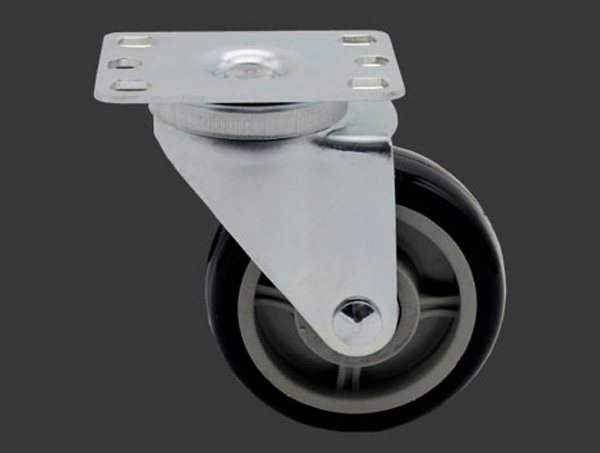

1. Wheel materials: clean workshop wheel materials are generally nylon, polyurethane and artificial glue (generally not ordinary rubber wheels, especially black wheels, which rub against the ground and fade easily). Of the three, nylon is hard, takes less effort to push, but is loud and can hurt the floor; The artificial glue (the so-called mute wheel) is soft, it doesn't make a push sound or hurt the floor, but it's relatively difficult to push; Polyurethane is between the two, so the general choice of polyurethane material, soft and hard moderate.
2. Castor support material: the support is usually galvanized carbon steel, stainless steel support cost is high, according to the use of the environment, requirements to choose, we generally recommend the use of stainless steel support.
3. Castor color: Nylon has milk white, gray and blue, among which milk white is used more; Polyurethane sauce red, gray, black, generally choose sauce red, gray more; Artificial glue is usually only available in grey.
4. Caster bearings: ball bearings, needle roller bearings, engineering plastic bearings, light casters (each caster bearing is less than 150kg) generally use ball bearings, lifting effort saving; Needle roller (column) bearings are generally suitable for heavy casters, with strong bearing capacity, but high friction force and difficult jacking; Plastic bearings (sleeves) are usually used with stainless steel supports. They are corrosion-resistant and flushable, but have larger gaps and are more laborious than ball bearings.
5, foot brake: side brake, tread brake, full brake, side brake is installed in the middle of the wheel; The tread brake and the full brake are installed on the upper part of the wheel; The side brake and the tread brake can only prevent the radial rotation of the wheel, the bracket can also rotate; Full braking (also known as double braking), with one foot placed in the radial direction of the wheel and the bracket steering while braking. Regular tread brakes are more commonly used, but we suggest that, because of the use of brakes, full braking alone is better.
